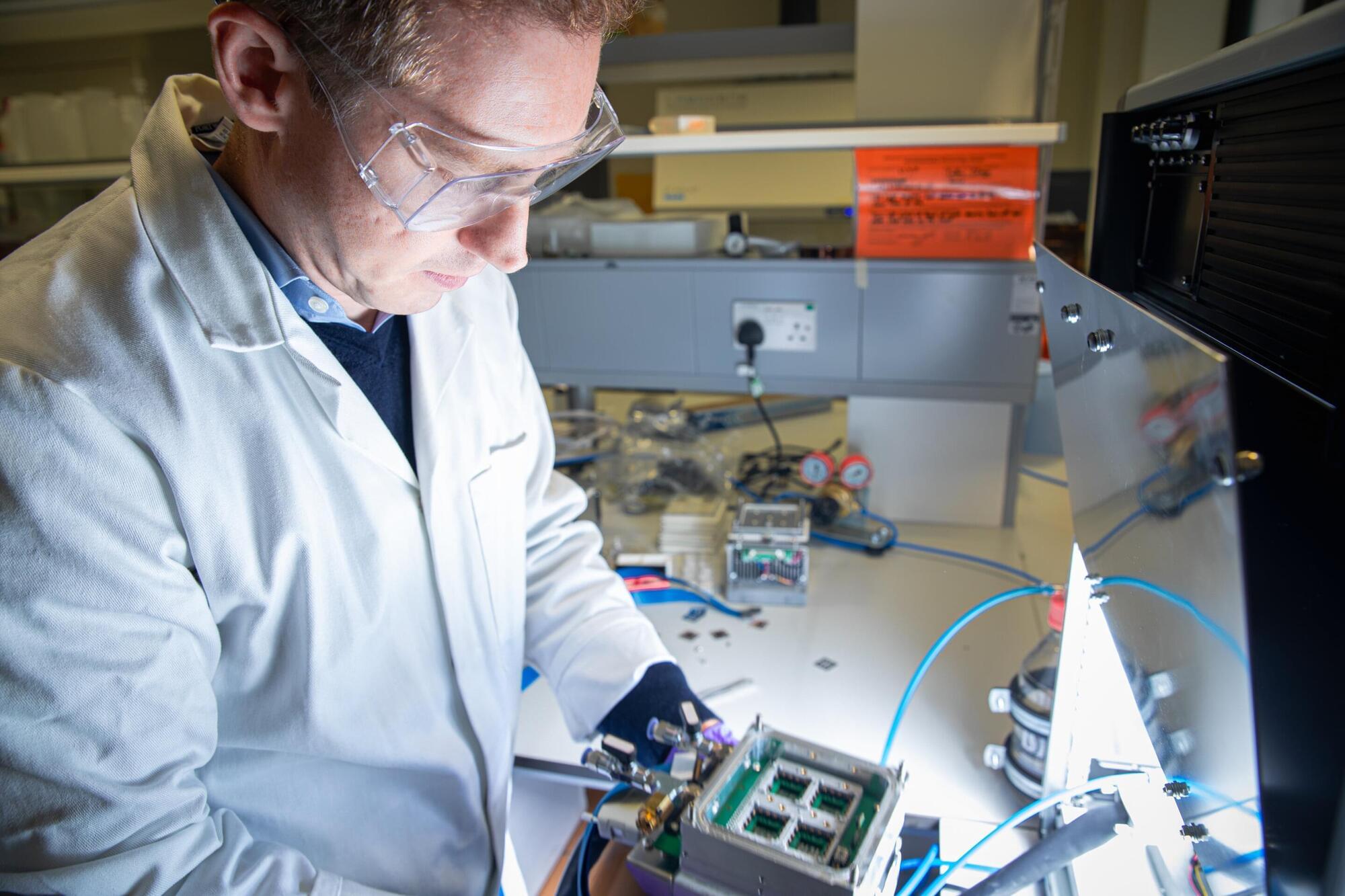A new study, published in Nature Nanotechnology and featured on the journal’s front cover this month, has uncovered insights into the tiny structures that could take solar energy to the next level.
Researchers from the Department of Chemical Engineering and Biotechnology (CEB) have found that dynamic nanodomains within lead halide perovskites—materials at the forefront of solar cell innovation—hold a key to boosting their efficiency and stability. The findings reveal the nature of these microscopic structures, and how they impact the way electrons are energized by light and transported through the material, offering insights into more efficient solar cells.
The study was led by Milos Dubajic and Professor Sam Stranks from the Optoelectronic Materials and Device Spectroscopy Group at CEB, in collaboration with an international network, with key contributions from Imperial College London, UNSW Sydney, Colorado State University, ANSTO Sydney, and synchrotron facilities in Australia, the UK, and Germany.
